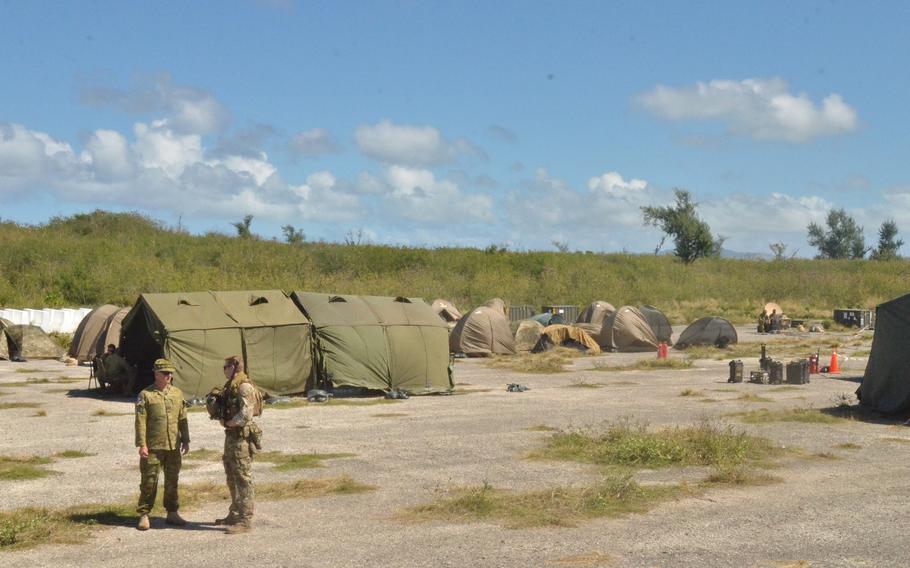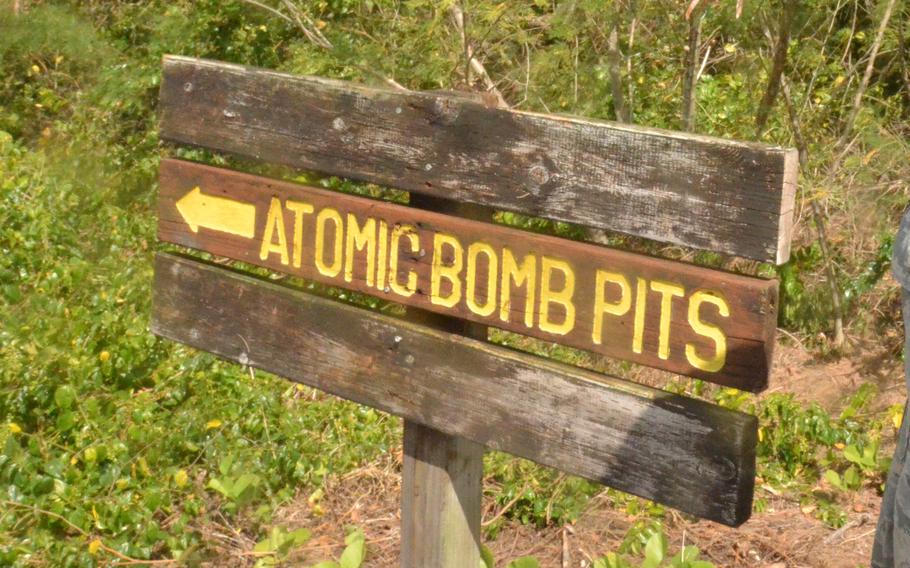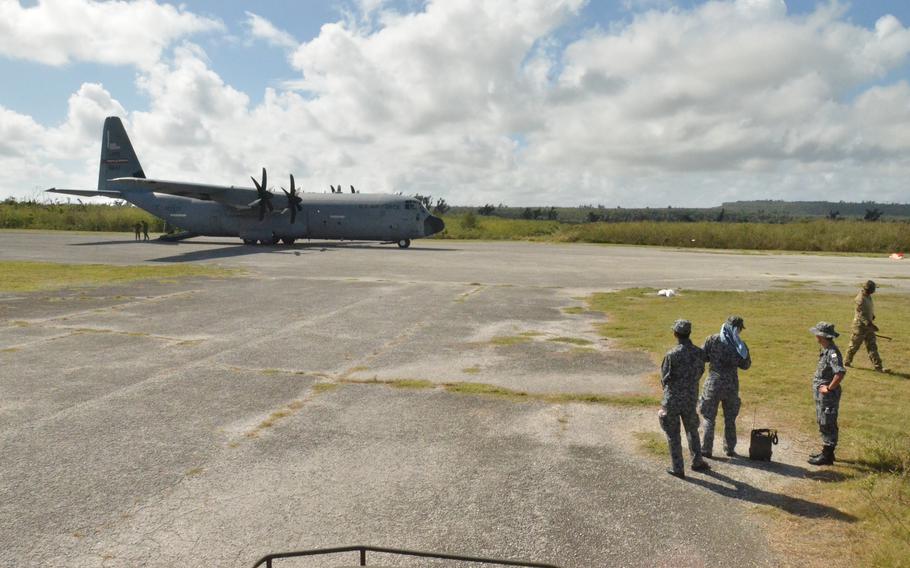SETH ROBSON

The U.S. Air Force is bringing the island airfield that launched the atomic bombings of Japan back into service as it seeks bases where its Pacific forces can disperse in wartime.
Gen. Kenneth Wilsbach, commander of Pacific Air Forces, told Nikkei Asia for a Dec. 13 report that North Airfield on the island of Tinian is being reclaimed from jungle that has overgrown it since World War II.
In 1945, the airfield included four 8,500-foot runways that launched B-29 Superfortress bombers against Japan.
Visitors to Tinian, a U.S. territory 118 miles from Guam, can still see pits where the atom bombs — Fat Man and Little Boy — were loaded onto B-29s bound for Hiroshima and Nagasaki.
The North Airfield “has extensive pavement underneath the overgrown jungle. We’ll be clearing that jungle out between now and summertime,” Wilsbach said.
“If you pay attention in the next few months, you will see significant progress” he told Nikkei, without providing a timeline for when the airfield will be in use.
Pacific Air Forces confirmed the comments in an email Tuesday to Stars and Stripes.
The recently passed National Defense Authorization Act, which will fund the military in 2024, includes tens of millions of dollars for projects on Tinian.
Funding for the island includes $26 million for airfield development, $20 million for fuel tanks, $32 million for parking aprons, $46 million for cargo pad and taxiway extension and $4.7 million for a maintenance and support facility.
The Tinian projects are part of efforts to restore World War II-era airfields throughout the western Pacific.

Visitors to Tinian can still see pits where the atomic bombs were loaded onto the B-29 Superfortress bombers bound for Hiroshima and Nagasaki.
Agile combat employment
The old airfields provide available real estate, Brig. Gen. Michael Zuhlsdorf, the Air Force’s deputy director of resource integration for engineering, logistics and force protection, said during a webinar hosted by the Mitchell Institute, a nonpartisan aerospace research organization in Arlington, Va., in August.
“We’re going to capitalize in investing in that and bringing some of those … bases to life,” he said. “We’re going to bring to life some mothballed bases that are out there.”
The plan is to build robust infrastructure to support agile combat employment, he said. Agile combat employment refers to the Air Force’s ability to move aircraft rapidly to a network of smaller airfields to avoid being targeted by missiles in the event of war.
Chinese missile forces could reach American bases in the region, meaning the Air Force is seeking places to disperse aircraft in wartime.
Last month, the U.S. and the Philippines marked the completion of a $24-million runway upgrade at Basa Air Base on the Philippines main island of Luzon.
Basa, just south of the larger Clark Air Base, is the home of the Philippine Air Force’s 5th Fighter Wing and was built by U.S. forces at the start of World War II.
The U.S.-funded renovation is one of several projects at bases in the islands that American forces have access to under the Enhanced Defense Cooperation Agreement, or EDCA. U.S. forces can operate from nine sites in the country, including four announced in February, under the 2014 security pact.
The U.S. has paid for $66 million in projects at Basa, including a warehouse and fuel storage tanks, the Philippine Inquirer reported Nov. 8. The U.S. Defense Department has earmarked $35 million in fiscal year 2024 to build a transient aircraft parking apron at the base.

Japanese airmen watch a U.S. Air Force C-130J Super Hercules aircraft on Tinian during the COPE North airpower drills in 2020.
‘Mutually reinforcing’
Investing in Tinian complicates planning for China or any other country that considers military challenges to a free and open Indo-Pacific, retired Air Force Lt. Gen. Dan Leaf, a former deputy commander of U.S. Pacific Command, said by email Tuesday.
“With modern aircraft and weapons, some of the preparatory work for a modern airfield is much better done in advance rather than response making it important to act now,” he said.
The restoration of the airfield means it will be available if needed for humanitarian assistance and disaster response, he said.
The airfield will be a useful part of the Air Force network, although not a game changer, Grant Newsham, a retired Marine colonel and senior researcher with the Japan Forum for Strategic Studies in Tokyo, said in an email the same day.
“The new Philippine airfields to which [the Air Force, Navy and Marines Corps] have access are also very useful and allow more effective cover of the South China Sea and even Taiwan,” he said. “Each location or facility plays a certain role — and they tend to be mutually reinforcing. You can launch and attack from many different directions — and that makes things difficult for an enemy.”
No comments:
Post a Comment